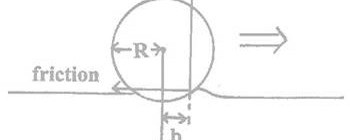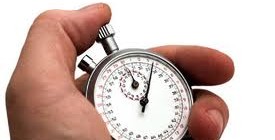From time to time I see the old debate about which is more important, Pace or Line, pop up and it for some reason always seems to annoy me. I’ve written a blog on this topic before and the general consensus seems to be pace, but in reality if you want to make putts they are both important and have to balance each other. In other words, there is certainly a range or window of potential lines that will result in a holed putt if the speed matches it.
But what gets under my skin is when people say, “What’s the point in choosing a line if you don’t know the pace”, as if there is a wide variety of possible lines which will work. And when they show the Putt Zone on TV it always look way too big to me based on my experience and so seems misleading (AimPoint was simulating Zones for Golf Channel as early as 2007). So I finally decided to do the simulation so you all can see exactly how big that window is for a variety of putts.
Let’s start with a very reasonable assumption–no one would purposely hit a putt at it’s maximum speed or even close to it because a miss would go 8 feet past the hole and the effective hole diameter would be absolutely tiny. So there’s no point in including a maximum velocity line in our usable range of where to aim. In reality the effective capture speed intentionally used by the vast majority of players on PGA Tour in stroke play is somewhere between die in the hole speed and 2.5 feet past the hole maximum. There are some players that go up to 3 feet past the hole but they are statistically very small. Any further than that introduces 3-putts and reduces capture width by more than 50%.
The table below shows the different aim points for 10 and 20-foot putts based on how hard you want to hit the putt.
Stimp 8 | AimPoint in Inches | |||
10′ Putts | 0′ Past | 1′ Past | 2.5′ Past | Range |
1% Slope | 4.1 | 2.3 | 1.5 | 2.5 |
2% Slope | 10.4 | 7.2 | 5.1 | 5.3 |
20′ Putts | 0′ Past | 1′ Past | 2.5′ Past | Range |
1% Slope | 9.6 | 7.6 | 5.8 | 3.8 |
2% Slope | 22.0 | 17.7 | 14.4 | 7.6 |
What you can take from this chart is that at stimp 8 on 10 foot putts, your average window for usable aim points is a little less than a cup wide (3.9″) , and on 20 foots putts its almost a cup and a half (5.7″). Anything outside of that window would either be short of the hole or hit more than 3 feet past the hole–both poor strategies.
At faster the stimps the window gets a little larger. Here are the same putts at stimp 10:
Stimp 10 | AimPoint in Inches | |||
10′ Putts | 0′ Past | 1′ Past | 2.5′ Past | Range |
1% Slope | 5.8 | 3.5 | 2.5 | 3.3 |
2% Slope | 14.1 | 10.3 | 7.3 | 6.8 |
20′ Putts | 0′ Past | 1′ Past | 2.5′ Past | Range |
1% Slope | 13.1 | 10.3 | 8.6 | 4.5 |
2% Slope | 28.8 | 23.5 | 19.5 | 9.3 |
You can see at stimp 10 the average size of the aim window increases by about an inch–5.1″ at 10′ and 6.9″ at 20′.
There is a zone or window of aim/speed combinations which work, but that window is not very wide for practical purposes. So when you hear “Pace Determines Line”, that is only true inside of a window that is usually one to two cups wide depending on the length of the putt. If you don’t know that window, then it’s irrelevant what speed you choose because the putt can’t go it.


























